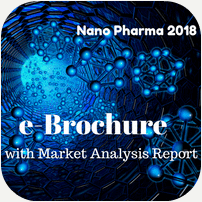Zumra Peksaglam
University of Southern California, USA
Title: Light-sensitive nanoparticles for Bcl-2 siRNA and paclitaxel co-delivery
Biography
Biography: Zumra Peksaglam
Abstract
Light-sensitive nanoparticles for siRNA and Paclitaxel co-delivery: They are catanionic vesicles that are formed spontaneously upon the interaction of an azobenzene-based cationic surfactant and a conventional anionic surfactant. As a result of the photo-responsive property of azobenzene moieties, the light-sensitive microstructure can be switched with light illumination from vesicles to micelles, lamellar structures, or free surfactant monomers. The usage of nanoparticles for chemotherapeutic drugs has a potential to increase cancer treatment efficiency. Additionally, a prospective therapeutic genetic material, siRNA, can be used to deactivate targeted mRNAs that cause inhibition of disease-associated protein production. Thus, the unique photo-assisted transition of vesicles to free monomers of light-sensitive nanoparticles were used to encapsulate both siRNA and a chemotherapeutic drug, Paclitaxel, to cancer cells and, then control the release of them by UV light exposure. In this work, the effect of hydrophobic tail of cationic surfactants on particle size, charge and surface characteristics are measured by small-angle neutron scattering (SANS), dynamic light scattering (DLS), zeta potential meter and cryo-transmission electron microscopy (cryo-TEM) to create an ideal delivery vector. The encapsulation efficiency and cellular uptake capability of Bcl-2 siRNA and Paclitaxel co-delivery through MDA-MB-231 human breast cancer cells are explored as 8:1 ratio of vesicle:PTX and 10:1 (w:w) N:P ratio (vesicle/siRNA) with 45% of cellular uptake. Therefore, azobenzene-based catanionic vesicles are used as a co-delivery nanovehicle to develop siRNA-based therapeutics with a hydrophobic anticancer drug. It is expected to improve tumor therapeutic efficacy by the usage of the unique photo-assisted delivery agent.

